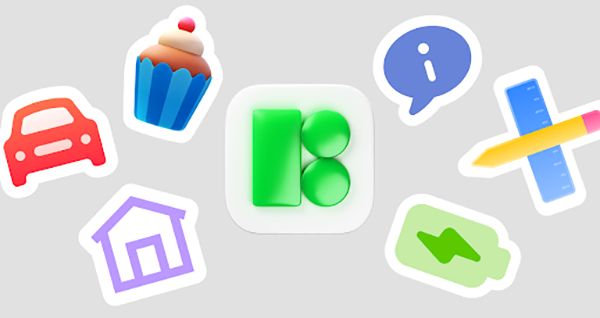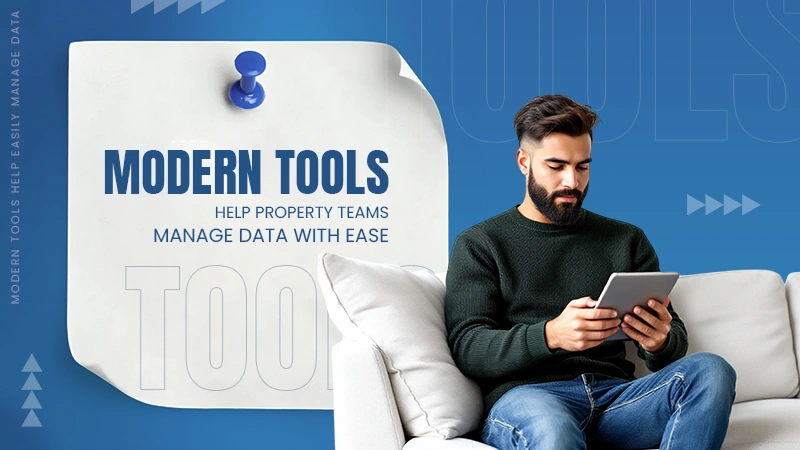Testing will confirm that your glyph did not break down or jitter, and your glyph is legible at 16, 20, and 24 pixels.
Icons8 Icons: An Operating Manual For Production Teams
- 1) Inventory the Work, Not the Artwork
- 2) Evaluate Where Icons Actually Live
- 3) Treat Vectors as Code
- 4) Choose One Family and Draw Boundaries for the Rest
- 5) Configure Before Download and Lock a Baseline
- 6) Role Playbooks You can Ship This Week
- 7) Patterns Grounded in Real Interfaces
- 8) Accessibility that Survives Deadlines
- 9) A one‑morning Acceptance Test
- 10) Workflow that Resists Entropy
- 11) Performance and Theming At Scale
- 12) Platform Nuance
- 13) Licensing and Practical Governance
- 14) Pitfalls and Fast Fixes
- 15) Rollout Plan That Won’t Wreck Cadence
- Verdict
- Frequently Asked Questions

Icons are much more than simple visual adornments. They are the interface contracts for all outcomes, status signals, and the easiest way to condense complicated intent into small, actionable targets.
When icons are treated as a cohesive governed system, your users will work through your products without friction for a better user experience.
When icons are treated as just graphics, it leads to inconsistency, more support tickets than you need to write, and wasted review time as your teams travel the production cycle.
This guide is a realistic, testable approach for the successful adoption and management of Icons8 icons. Their clean, consistent vectors are treated as code.
Thus, it can allow production teams across product, documentation, coursework, and marketing to create stable metaphors and increase their speed of delivery.
KEY TAKEAWAYS
- Start by listing the primary product-based verbs and nouns to establish a consistent catalog.
- Utilize clean SVG paths and theme state colors through semantic tokens to preserve theming and code integrity.
- Choose a primary icon family to use across your user interface to avoid style drifts and establish consistency in interactive surfaces.
- Set the size, padding, and color on the Icons8 site to establish a baseline that every new icon must observe.
- Ensure you have a large enough target size and provide a name for all users using an icon-only control.
1) Inventory the Work, Not the Artwork
Start with a text list of the verbs and nouns already present in your product: navigate, create, delete, edit, upload, and download. Also, import, share, export, search, filter, sort, media transport, and message. Then consider admin, reconcile, restore, archive, report, settings, status, and health.
Query Icons8 with that language. The catalog’s tagging maps to practical synonyms—merge, breadcrumb, diff, alert, bookmark—so you land on candidates aligned with how your team writes specs and commits. Vocabulary first keeps metaphors stable when the headcount grows.
2) Evaluate Where Icons Actually Live
Prototype at 16, 20, and 24 px on light and dark. Place candidates inside list items, menu rows, tabs, form fields, toolbars, and table headers.
Reject any glyph that collapses, leans, jitters, or reads lighter than neighbors. Icons8 families share corner behavior, stroke rules, and optical centers. That optical structure is why a mixed screen still reads like one voice.
3) Treat Vectors as Code
Open the SVG. Expect shallow grouping, clean paths, and attributes that cooperate with theming. Inline the SVG and color through currentColor, then drive states with semantic tokens.
Add SVGO to CI with a strict preset and block merging processes that introduce transform soup or hard‑coded fills. Maintain vectors as the source of truth; export PNGs only for legacy surfaces.
4) Choose One Family and Draw Boundaries for the Rest
Icons8 ships filled, outline, and two‑tone families, plus platform sets aligned with iOS, Material, and Fluent. Pick:
- Primary family for interactive UI.
- Secondary family for slideware, documentation, and diagrams.
If mixing is unavoidable, publish a territory map and enforce it in review:
- Navigation, shell, dense controls → outline.
- Technical docs and diagrams → two‑tone.
- Campaign banners and hero blocks → bold pictograms.
Style drift isn’t a matter of debate; it’s a governance gap. Close it with rules and review checklists.
5) Configure Before Download and Lock a Baseline
On the site, padding, set color, and background. Export a compact-sized matrix with constant optical padding. Commit that matrix as your baseline. Every future icon would have to match it.
That single constraint prevents equal boxes that appear as unequal weight and eliminates hours of pixel nudging.
6) Role Playbooks You can Ship This Week
You may ensure every member of the production team understands their specific responsibilities for icon governance by defining clear playbooks for different roles.
Designers
Write an icon contract that specifies stroke weight, default size, corner radius, cap and join, and state tokens (default, hover, active, warning, disabled, success, error, info).
Add do/don’t pull from your UI: ambiguous metaphors, destructive actions without labels, outline glyphs that disappear on photos. Put a quarterly audit on the calendar and clear up outliers with catalog swaps, not redraws.
Engineers
Prefer inline SVG. Ship a narrow Icon component that accepts size, name, and tone, and resolves tone to tokens in one place. Back it with a typed manifest mapping names to path data and family.
Sprite the 10–20 increasingly common actions for cache efficiency. Add SVGO to the pipeline; fail builds with inline styles or hard fills. Icons8 vectors compress cleanly and keep elements small.
<button class=”icon”>
<svg aria-hidden=”true” viewBox=”0 0 24 24″ width=”20″ height=”20″ fill=”none” stroke=”currentColor” stroke-width=”2″></svg>
<span class=”label”>Edit</span>
</button>
Content and Marketing
Select one lightweight glyph family for inline callouts and tables, and a heavier family for covers.
Keep a single accent plus a neutral base, so icons enable typography and photography. For partner rosters, SSO tiles, and integration pages, use the maintained brand catalog instead of scavenging the web. Geometry and naming stay consistent, and licensing remains clear.
If your identity or partner grids need enterprise vendors, the set includes the microsoft logo. It is sized to hold at small footprints and easily adjustable to token‑driven color or a simple circular backplate.
Startups
Decide in a day like one family for app UI. One for docs and slides. Put both into the repo with a one‑page README listing sizes, exceptions, tokens, and the territory map. That page ends endless micro‑debates and keeps review time on flow and copy.
Teachers and Education Teams
Icons are a clean way to teach accessibility and semiotics. Assign a re‑icon of a familiar app using a single family.
Test with 5 people outside the class. Discuss why a few metaphors survive at 16 px while others fail. Because Icons8 offers multiple treatments per concept, comparability is fast without redraws.
7) Patterns Grounded in Real Interfaces
Using distinct icon family types in popular interface patterns guarantees a high level of functionality and quick comprehension for the user.
Dense Tables and Toolbars
Outline icons at 16 or 20 px preserve their density without turning to fuzz. Coordinate destructive actions with labels and confirmation. Keep column actions in headers and row actions inside rows.
Icons8 outline families ensure even stroke and rounding, so the table reads like one system.
Settings and Onboarding
People skim. Neutral glyphs group together related options and shorten scan time. Keep spacing predictable. Don’t replace labels for major risk choices. Swap placeholders for catalog icons that fit with your contract to avoid metaphor drift.
Forms and Input Feedback
Use quiet definition icons adjacent to inputs for affordance and error hints. Reserve filled variants for extremely important errors or confirmations. Bind colors to tokens and confirm both light and dark modes on real screens.
Brand Marks and Partner Surfaces
At small sizes, SSO and integration pages require known logos, without legal headaches. Pull only from the maintained brand set as well as size steps, document placement, and backplate rules in your design system.
8) Accessibility that Survives Deadlines
Considering accessibility aspects from the beginning allows you to create interfaces that all users can actually use, and this is a vital part that should not be compromised for deadlines.
- Targets. 24 px minimum when an icon is the sole alternative; larger for primary touch actions.
- Contrast. Outline shapes vanish on gradients and photos. Use filled variants or add a generic backplate. Icons8 families support both paths.
- Names. In case a control already has text, hide the icon from assistive tech. If it’s icon‑only, supply an accessible name. So skip alt text in inline SVG when decorative.
9) A one‑morning Acceptance Test
This quick and standardized evaluation verifies the quality of any icon library you may consider using, minimizing time and resource commitment to a poor icon library.
- Sample ten icons linked to real tasks. Test at 16, 20, 24 px on light and dark.
- Inspect joins and miter limits at 200%. Spikes and kinks reveal weak geometry.
- Compare primitives. Circles and rounded rectangles must share radii and stroke weight across the family.
- Check optical alignment. Arrows maintain their head and tail; triangles do not lean.
- Read the SVG. Favor uniform paths and minimal grouping; avoid transform‑heavy markup and inline styles.
Icons8 packages routinely clear this test, which is why teams adopt them without a cleanup sprint.
10) Workflow that Resists Entropy
Establish a controlled process to help prevent the slow, but definitely inevitable disintegration of your iconic system over time and between teams.
- Alias map. Map domain language to icon names. Sync to refresh. Link → chain. Merge → fork, if that correlates with your tooling. Share across design and code, so everyone picks the same asset.
- Sprite + manifest. Commit a sprite for frequent actions and a JSON manifest that records source family, URL, role, and steward. This turns a folder into an accountable system and pays off during audits and redesigns.
- Locked metaphors. Define symbols that cannot change without review—settings, search, upload, delete, share, download, bookmark. Treat shifts as breaking and require a quick test.
11) Performance and Theming At Scale
Inline SVG plus tokens readily adapts to themes without swapping assets. Your component library should expose a single Icon component with size presets and tone values. Ban ad‑hoc imports that bypass the wrapper.
Tree‑shaking stays reliable and bundles stay small. Export PNGs only for legacy surfaces that still expect bitmaps.
12) Platform Nuance
Use platform‑native families for Android, iOS, and Windows when instant recognition matters. Icons8 offers those families. For the web, choose a neutral array that matches your type scale and spacing rhythm and commit to it.
13) Licensing and Practical Governance
Icons8 assists in free and paid paths.
Free use typically requires attribution; paid plans eliminate that requirement and reduce risk. Publish a short license note inside your design system. Keep your initial source URLs in the manifest. Assign a steward and keep the quarterly audit on the calendar.
14) Pitfalls and Fast Fixes
Predictable mistakes and pre-approved and quick fixes mean that mistakes will not derail the production schedule.
- Three families in one toolbar → lock a initial set and define where alternates live.
- Clever metaphors that slow comprehension → pair icons with labels in critical flows and test with 5 outside users.
- Hard fills that fight tokens → enforce currentColor and strip stray attributes in CI.
- Contrast failures on photos → utilize filled variants or backplates and verify at target sizes.
15) Rollout Plan That Won’t Wreck Cadence
A controlled launch process enables new icon families to be launched in a timely manner without significant disruption or delaying feature development.
- Inventory and dedupe. Group by action.
- Choose one family for core UI and another for docs. Publish the rule.
- Replace icons in one surface archetypical—navigation and toolbars—then validate spacing and contrast.
- Roll out in small waves corresponding to features.
- Close with a cross‑theme audit at 24 and 32 px on light and dark.
Verdict
Icons8 behaves like dependable infrastructure: broad catalog, coherent families, clean vectors, and integrations that shave minutes off repetitive work. Govern icons such as code and your interfaces stay readable while the team ships faster.
Frequently Asked Questions
Why is it important to test that the icons you select look fine at various sizes?
What is the benefit of the current Color in SVG?
This allows a single icon to inherit the text color of the site, which makes adapting to theming or dark mode very easy and very performant.
How does Icons8 support branded logos?
It has a second catalog that advises owners and governs their footprint on the SSO or partner pages, reducing the risk of legal challenges, ensuring the geometry is consistent.
What is a territory map of icon families?
A simplistic rule sheet states that the icon family is the only icon style you will use in a certain area of your UI.
You don’t know how much you rely on your laptop until it acts up. The cursor stops moving. The fan…
Imagine this: You are juggling ten things—one tab for work, one for shopping, and one for that article you wanted…
The majority of engineering teams work at a much slower pace than they could because of systematic friction in their…
The dramatic evolution of eCommerce in the last decade has reshaped consumer expectations regarding speed, convenience, and sustainability. As a…
Payroll mistakes can lead to fines, delayed payments, and payroll disputes. These payroll issues can create pressure for high-risk businesses…
Property management teams can benefit from data in a number of ways. Everyone understands that it’s critical to make wise…
Fantastic things don’t just happen. They occur when teams transform hazy inputs into clear and actionable decisions for everyone, replacing…
There are lots of tasks that are generally very amusing and thrilling; however, bookkeeping is definitely not one of them.…
In the fleetly evolving geography of digital education, using slice- edge software development services are essential for creating poignant literacy…




